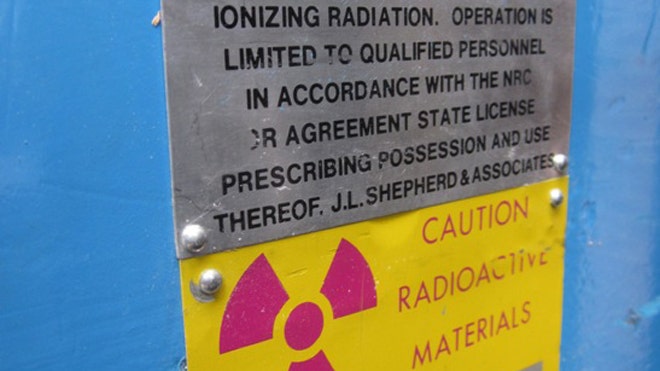Photo: (NNSA)
Raw, radiological material that terrorists could use to build a dirty bomb was secured in a Philadelphia school this week.
On March 11, the U.S. National Nuclear Security Administration (a semiautonomous branch of the Energy Department) and Philadelphia’s Temple University announced they had secured a device containing cesium 137 — one of more than two dozen such elements used in medicine and industry that could be turned into a dirty bomb.
“This operation is part of NNSA’s broad strategy to keep dangerous nuclear and radiological material safe and secure by enhancing our nation’s security,” NNSA deputy administrator Anne Harrington said.
and secure by enhancing our nation’s security,” NNSA deputy administrator Anne Harrington said.
A terrorist dirty bomb attack using domestic radioactive sources bomb may seem preposterous, yet the NNSA has identified more than 2,700 vulnerable buildings with high-priority radiological material in the United States alone.
As of Feb. 28, 2011, only 251 of these buildings had completed NNSA security enhancements. The agency hopes the rest will do so by 2025 — leaving another 12 years of vulnerability to theft and misuse.
Dirty bombs are far easier to construct than nuclear bombs and do not use fissile material such as enriched uranium or plutonium. Extracting plutonium requires a reactor and enriching uranium is no easy task. Dirty bombs (security forces all them “radiation dispersal devices”) use conventional explosives such as car bombs to scatter radioactive materials through a densely populated area.
The physical damage is limited and the threat of dying from radiation exposure very small with such a device. But a dirty bomb would cause extensive economic damage and social upheaval while instilling panic and fear in civilians.
Philadelphia, New York City, and around the country
In this case, the material came from a medical research irradiator that was removed from Temple University’s Old Medical School Building and transported to a secure location, where it will be prepared for disposal at a federal facility.
The device had been used in medical research for two decades. The cesium-137 left within it would have been an attractive target.
Prior to this decommissioning, Temple University had worked with the NNSA to install security enhancements in all their facilities with high-activity radiological materials. The city of Philadelphia has collaborated with the agency as well to secure 28 buildings with high-activity radiological materials since 2005.
Just over two years ago, another terrorist treasure trove was recovered from a warehouse a mere 25 miles outside of Manhattan. On January 2010, the NNSA secured of high-activity radioactive devices containing enough cesium-137 to make a bomb.
“Properly disposing of more than 3,000 curies of Cesium eliminates the threat this material poses if lost or stolen and used in a dirty bomb,” NNSA administrator Thomas P. D’Agostino said at the time.
Fox News has the full article











